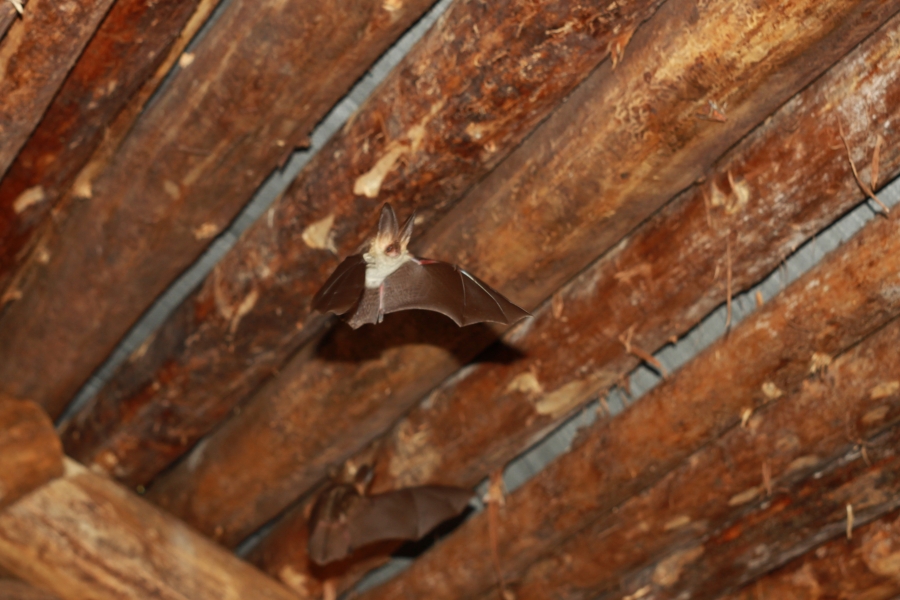Did you know that it only takes less than an inch of space for bats to start inhabiting your home? That's why bats quickly come in and out of a house or building. Well, a small number of bats is not much of a problem. But, when their colony grows, then, real problems occur, which mostly have to do with guano or fecal buildup.
Hearing the sound that bats make, like bat wings rustling or squeaking in your chimney, walls, or attic, can be a nuisance and disturbing. Also, the stench shouldn't be ignored as this sign would mean a decaying bat that could be a huge turnoff for guests and visitors. In addition, bats can bring damages to your home, which you'll learn about further below.
Unpleasant Odors And Property Damages
The damage bats cause can range from physical or structural damage to health and safety damages. Having bats inhabiting your house may result in strong, unpleasant odor due to their droppings or guano left in your chimney, walls, and attic. If a colony of bats resides in your home, expect at least 30 to 40 bats leaving guano every day. Accumulation of guano results in unpleasant odor spreading throughout your home, which also carries a health threat that can be fatal.
Here are the damages that bats may cause to your home:
• Insulation And Wiring Damages: In addition, bats can cause damage to your home. These nocturnal creatures can chew on and damage your walls, insulation, and electrical wiring. When this happens, your health and safety can be compromised as your family is more exposed to drafts and possible short circuits or other electrical problems. It can also lead to higher utility bills due to breach in your insulation, particularly in your roof and attic.
• Roof Damage: Check thoroughly the totality of your roof because bat access may cause damage to your roof. Also, it could result in a broken window, a broken or missing brick, or a loose piece of siding or board.
Infection And Spread Of Disease
Aside from property damage, bats can cause health problems, too, which are far worse damages due to the expenses and discomfort caused by getting sick. The two common diseases associated with bats are histoplasmosis and rabies.
• Histoplasmosis: Bat guano carries the fungus called Histoplasma capsulatum, which is a type of fungi whose spores are airborne and microscopic. They can easily get into your home's living area, and, if inhaled, can cause histoplasmosis, a type of lung infection. While the infection eventually clears up on its own, it can progress into chronic lung infection requiring medical treatment. Histoplasmosis can cause the spread of infection to other body organs, which can be fatal.
• Rabies: Also, bats can transmit the rabies virus to humans from a bite, which causes brain inflammation. Rabies is fatal if untreated soon after infection. While only a few bats carry rabies, it's not possible to determine whether or not a bat is a carrier just by looking at them. Thus, it's crucial to start rabies treatments immediately if you are bitten by a bat.
What To Do When You See Bats At Home
If you reside in an area that's warm all year or if you have a warm attic, bats are unlikely to leave your property, but would go out every night to find food. The bats tend to migrate during winter, but return when the weather in your area warms up again.
If ever you hear, see, or smell any evidence of a colony of bats inhabiting your home, find out where they're exactly entering your home. After this, you'll need to remove the bats and prevent them from coming back by sealing off your property.
Here are some tips to confirm that bats are inhabiting your home:
• Find the entry points of bats in your home by looking for evidence of urine stains or bat guano on your home's exterior. If there's a lot of guano on a particular area of your roof or wall, then, that's likely where the bats' entry point can be found.
• Watching your house at dusk is also a good idea. Wait for the bats to leave your house during their nightly habit of food hunting. Usually, they'll leave as a large group.
• A tall ladder can be used to examine your home for an area where bats could be entering and exiting your home. Bats can squeeze themselves through an opening that could be as tiny as 3/8 of an inch, and their common entry points include vents, ridge caps, and gaps in fascia boards and eaves.
Because fumigating or hurting bats is illegal, you should wait for them to migrate before having your home sealed off before they return. Seal off all entry points humanely and consider hiring a professional to eliminate your bat problem.
Conclusion
Bats can cause structural damages to your home, including your roof, attic, ceiling, walls, and even your wiring and insulation. Also, they may cause health problems that could potentially result in high medical costs and endanger your and your family's life. Preventing bats from inhabiting your home should be done legally and humanely by sealing off all entry points when they migrate or hiring a professional to do it.







